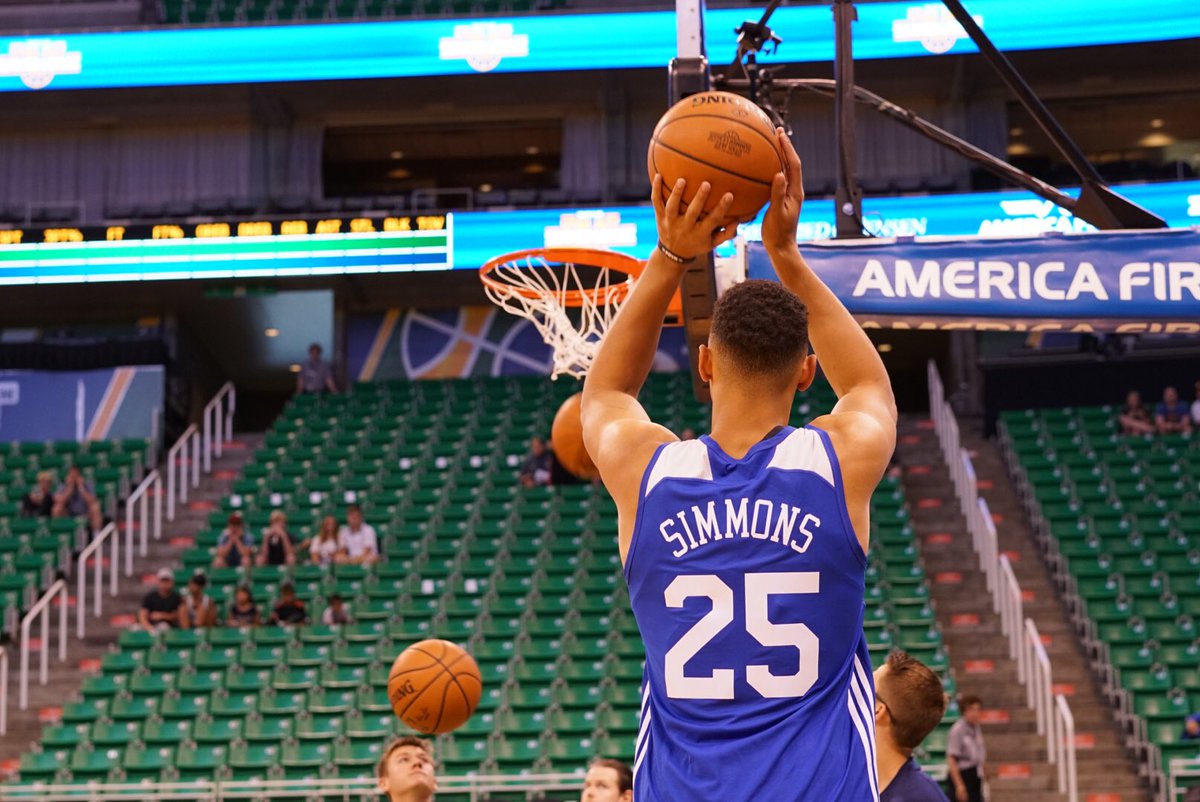Yesterday, Ben Simmons rolled his ankle in practice and left for precautionary X-rays.
Those bastard X-rays showed Simmons broke his fifth metatarsal bone in his right foot. The timetable for his return is still up in the air, but he may have to undergo surgery to repair the fracture.
That didn’t stop people from automatically jumping to conclusions and blaming Simmons’ massive 30+ pound weight gain this summer as being the reason he suffered the injury. All you have to do is search “Simmons weight” on Twitter for all of the expert doctors out there to tell you exactly why Simmons suffered this injury.
But there’s a difference between Twitter doctors and people who actually have deep insight into the issue with experience. ESPN’s Baxter Holmes wrote about the Lakers’ second overall draft pick, Brandon Ingram, and his attempt to put on some weight this summer.
To help, Ingram spent hours in the weight room. “The other thing is that he ate,” Capel says. “We had him eating all the time.” After Duke, Ingram worked with a North Carolina-based personal trainer and consumed six meals totaling 5,000 calories per day leading up to the draft. Around that time, Ingram relied on the reminder application on his phone — it went off every two hours, Joann says — to keep up with his hectic diet. He told USA Today that he wanted to weigh 210 pounds by the Lakers’ 2016-17 opener in the fall.
The knee-jerk reaction: If Ingram wants to succeed in the “man’s world” of the NBA, he must continue feasting to add as much weight as possible as quickly as possible. That view isn’t exclusive to Ingram; it’s decades old and is especially reserved for svelte young hoopers who, upon realizing their pro aspirations, look like saplings in an old-growth forest.
But it’s wrong, experts say.
Weight goals and accelerated weight gain, they claim, are not only shortsighted, but dangerous.
…
In an interview, [longtime trainer Tim] Grover laments the notion that Ingram must rapidly bulk up in order to survive in the pro ranks.
“That’s how they’re going to fail in the NBA,” Grover says. “[Weight gain should be] a slow process. These are basketball players. These aren’t body builders. They move. They perform. They have to perform out there. So they know how their body feels. You can’t just pack all this amount of weight on there and expect them to still be able to have the shooting touch and move the same way.”
Grover and others who have worked with athletes in this field for years strongly suggest that the best and safest approach to weight gain is to space it out over several years. And if Ingram wants a specific blueprint, he needn’t look any further than the childhood idol whose posters graced his bedroom wall, whose sneakers he sported, and whose moves he mirrored, a fellow slender, sharp-shooting wing to whom his build is most often compared: Kevin Durant.
Durant, of course, didn’t gain all that weight as fast as he could. Through the years, you could see him add on the muscle. We’re kind of used to seeing that from rookies anyway; gradually gain the muscle year after year so by the third or fourth year in the pros, they’ve filled out.
So is Simmons’ weight gain the reason for his injury? Maybe. Nobody can definitively say it with 100% certainty. He could’ve rolled his ankle weighing in at 150 pounds. It can happen at any time on the court and off the court. It could happen getting out of bed.
But there could be something to him putting on so much weight in such a short time. There’s no disregarding each side of the argument. I think they’re both valid. I just want to know who was telling him to gain that much weight in such a short time … Hey, Bryan.


This “article” is 15 sentences. With two links, and a bunch of pasted text that is about a different player, on a different team thank the title subject.